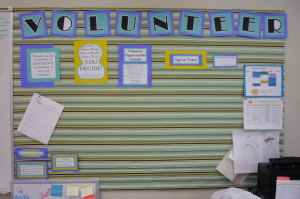 The 20th anniversary of the launch of the Virtual Volunteering Project is approaching! I count it as December 1, 1996, actually, though I could be off by a few days. It was probably summertime 20 years ago that the project was funded, actually.
The 20th anniversary of the launch of the Virtual Volunteering Project is approaching! I count it as December 1, 1996, actually, though I could be off by a few days. It was probably summertime 20 years ago that the project was funded, actually.
All that was on my mind when I read that World Pulse, a global nonprofit organization, put out a call for stories that explore the role of technology in our lives and its potential to bring positive change:
At World Pulse, we see so many signs of the good. Every day, women and men creatively embrace tech tools to solve the pressing problems facing our communities and our world. From mobile apps designed to track incidents of violence against women to crowdfunding platforms that put money in the hands of social entrepreneurs, technology is making so much possible for women everywhere.
What technologies have the most potential to make a difference in your community? Do you have a story about using communication technology to form meaningful relationships or bridge a geographical divide? Maybe you are part of a group using technology to mobilize for change.
I submitted my own story for this challenge, noting:
I’ve been researching virtual volunteering for more than 20 years now, and the biggest shock for most people that aren’t familiar with the practice and hear me talk about it at length is just how close I feel to so many of the volunteers and volunteer-involving agencies all over the world. They are my friends and colleagues, just as real as people I work with onsite, face-to-face. These are all real people with hopes and fears and challenging ideas and humor and talents. So many of these online relationships, established through email and Twitter and online communities, are so very, very personal to me.
I mean that from the bottom of my heart.
By the time I left the Virtual Volunteering Project, I had worked with more than 300 online volunteers. I could tell you so many things about many of them: their career goals, their music tastes, what they enjoyed doing as online volunteers, what they DIDN’T enjoy, and on and on. No, I didn’t know them all that intimately – not all of them wanted to be known that intimately, and there just isn’t enough time in the day to get to know 300 people that well, online or off. At least one of my online volunteers had mental disabilities, and his doctor was one of his references; I got to talk with that doctor once on the phone, and he told me what a huge impact virtual volunteering had had on this particular volunteer. I hung up the phone and cried – I’d had no idea.
I kept working with online volunteers when I took over the UN’s Online Volunteering service, then also a part of NetAid, in February 2001, and a year later, one of the online volunteers died that I had been working with since joining the UN Volunteers program headquarters. She was very young, killed in an accident. I was shattered. We had often IM’d each other, just chatting over this and that. She’d formed a nonprofit with other online volunteers she met through volunteering online with UNV. I was also heartened that, when I sent an email to the entire UNV organization announcing her death, something any program manager did for a volunteer killed in the field, the head of the organization then, Sharon Capeling-Alakija, immediately directed her staff to write the online volunteer’s parents a letter of condolence, just as UNV does when a UN Volunteer dies.
That’s why I get so weary of explaining over and over to people new to virtual volunteering, or skeptical of the practice without reading anything about it, that this volunteering is not impersonal. As I said in an email to someone that blogged disparagingly about virtual volunteering, saying that, as a result of it, “volunteering has the potential to lose its social and community-building benefits”:
Your blog assumes onsite volunteers work in groups and have lots of interaction. This is often not the case. MANY onsite volunteers work in isolation: they arrive, they receive an orientation and training, and then spend their time alone in a room stuffing envelopes, or sorting in-kind donations, or checking inventory, or cleaning something, etc. You cannot assume that onsite volunteering automatically means lots of personal interactions.
I’ve studied virtual volunteering since the mid 1990s, and what I’ve found is just as much or as little social and community-building benefits as any other volunteering. It all depends on the culture of management: is the manager of online volunteers one who provides lots of personal interactions, or one that gives a task and then interacts only at the request of the volunteer? Whether or not any kind of volunteering has social or community-building benefits depends on the manager and the culture of the organization, not necessarily the task being done onsite or online.
Working with virtual volunteering? It’s personal. At least it is for me.
 There is lots more information about what it’s like to work with online volunteers in The LAST Virtual Volunteering Guidebook, available both as a traditional printed book and as a digital book. The advice is based on both extensive research of virtual volunteering practices at a variety of organizations all over the world and my own experience working with online volunteers – I’ve now worked with more than 1000, some of whom I’m still friends with online, some of whom have become friends offline as well. And if you are about to write about virtual volunteering, but you don’t want to read the guidebook, then PLEASE, at least, first read these Myths About Virtual Volunteering.
There is lots more information about what it’s like to work with online volunteers in The LAST Virtual Volunteering Guidebook, available both as a traditional printed book and as a digital book. The advice is based on both extensive research of virtual volunteering practices at a variety of organizations all over the world and my own experience working with online volunteers – I’ve now worked with more than 1000, some of whom I’m still friends with online, some of whom have become friends offline as well. And if you are about to write about virtual volunteering, but you don’t want to read the guidebook, then PLEASE, at least, first read these Myths About Virtual Volunteering.
 This blog entry that you are reading now is more for me than anyone else: here are my top blogs of 2016 – the ones I wrote this year and that got the most views:
This blog entry that you are reading now is more for me than anyone else: here are my top blogs of 2016 – the ones I wrote this year and that got the most views:




